

On January 9, 2023, the first domestic nano-knife treatment for liver malignant tumors was successfully performed at Xiangya Third Hospital of Central South University. The surgery was carried out by Professor Liang Qi's team from the Interventional Department and Professor Fu Dianxun from Tianjin Medical University General Hospital. During the surgery, the High Voltage Steep Pulse Minimally Invasive Therapeutic system independently developed and produced by Yuanshan Medical Technology Co., Ltd(Alpmed). was used, and CT guidance was used to perform Nanoknife ablation for patients with dangerous organ liver portal tumors.
The patient, a 64-year-old male, was diagnosed with primary hepatocellular carcinoma BCLC stage B in November 2022 after a half-month checkup of a liver mass at the Radiology Interventional Unit of the Third Xiangya Hospital of Central South University. After 50 days, the patient returned to the hospital to review the dynamic enhanced MRI of the liver, which showed that the S6 and S7 tumor lesions had been completely inactivated, but the nodules in the S8 segment were larger than before.
Professor Liang Qi from the Interventional Department of Xiangya Third Hospital of Central South University led a team to consult on the patient's condition and stated that the tumor lesion in the S8 segment was relatively small, with a maximum diameter of 2cm, and could be treated with curative ablation. However, due to the tumor being adjacent to the porta hepatis, the important blood vessels of the portal vein and hepatic artery, traditional thermal ablation is prone to damaging the nearby large blood vessels. In contrast, the NanoKnife ablation technology has the unique advantage of "non-thermal, selective ablation", which can protect the adjacent vascular structure and ensure the highest safety for the patient. According to the shape of the tumor, precise needle placement can be achieved through percutaneous puncture to kill tumor cells without damaging the liver and surrounding large blood vessels, making it a more feasible option. After full communication with the patient and their family, it was decided to use NanoKnife ablation therapy.
The patient was placed in a supine position, and dynamic CT scanning was performed to determine the position of the puncture needle. Two needles were inserted with a distance of 2.0cm between them, and the exposed length of the ablation needle tip was 1.5cm, ensuring that the electrode area completely enveloped the tumor. Liver tumor ablation was performed with a voltage of 3000V and a pulse width of 70us, and a current of 20A-26A was applied for a total of 10 sets of pulses, taking a total of 26 minutes. Immediate postoperative CT enhanced scanning showed no fluid accumulation in the abdominal cavity, and the tumor appeared as low density with visible gasification around it. The ablation was completed, the puncture needle was removed, and the operation was successful. Symptomatic supportive treatment was given after the operation, and the patient recovered well. After regular follow-up examinations, no significant abnormalities were found.

(preoperative)
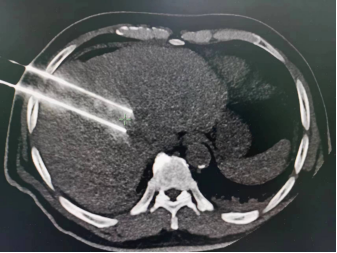
(Intraoperative needle placement diagram)
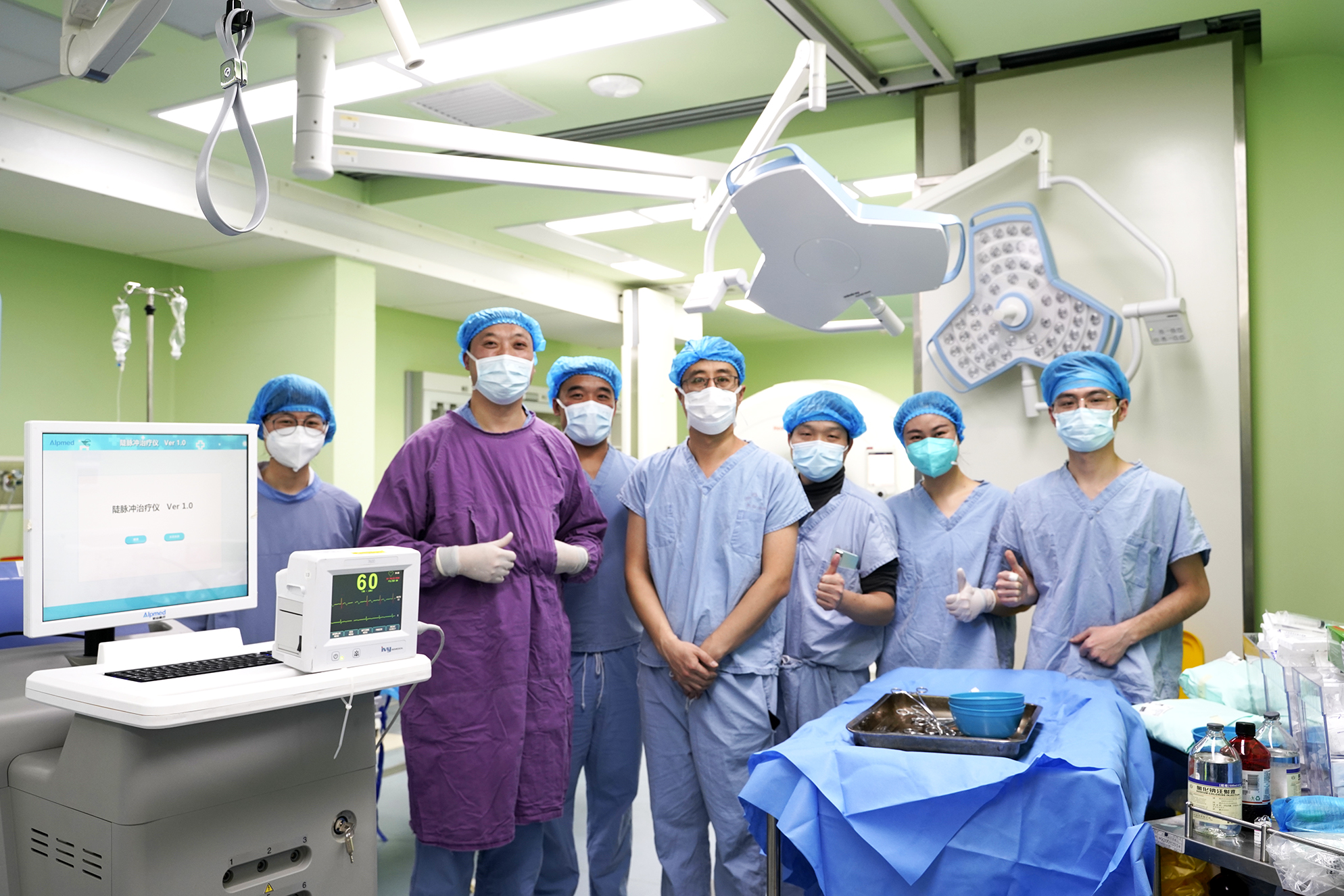
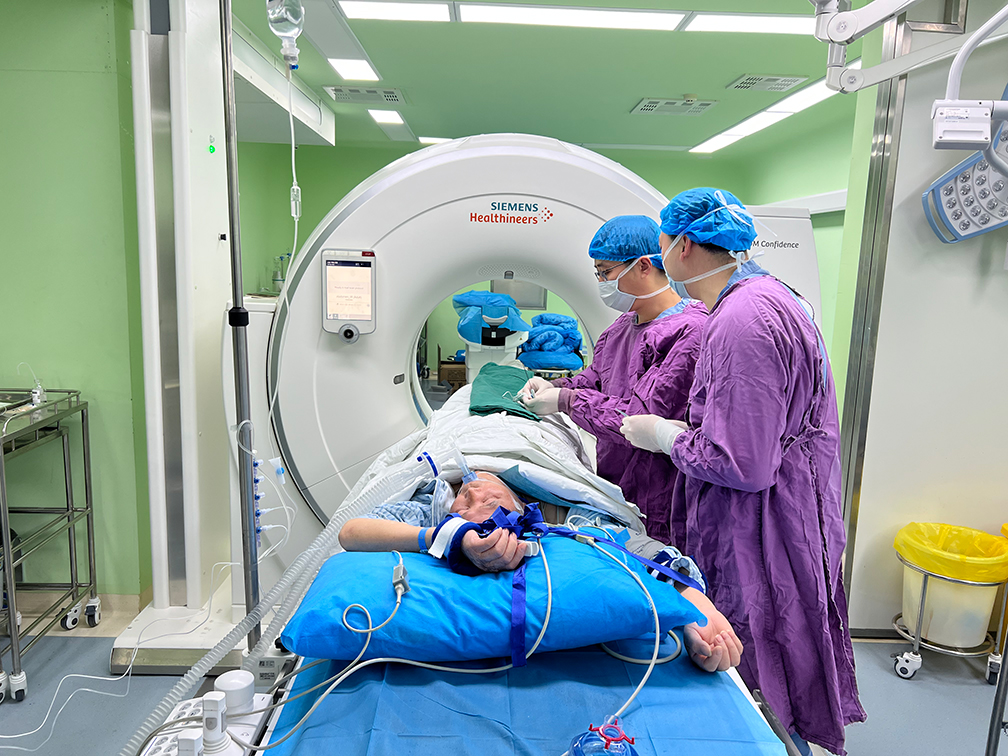
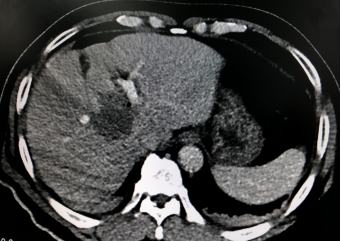
(Postoperative enhanced imaging.)
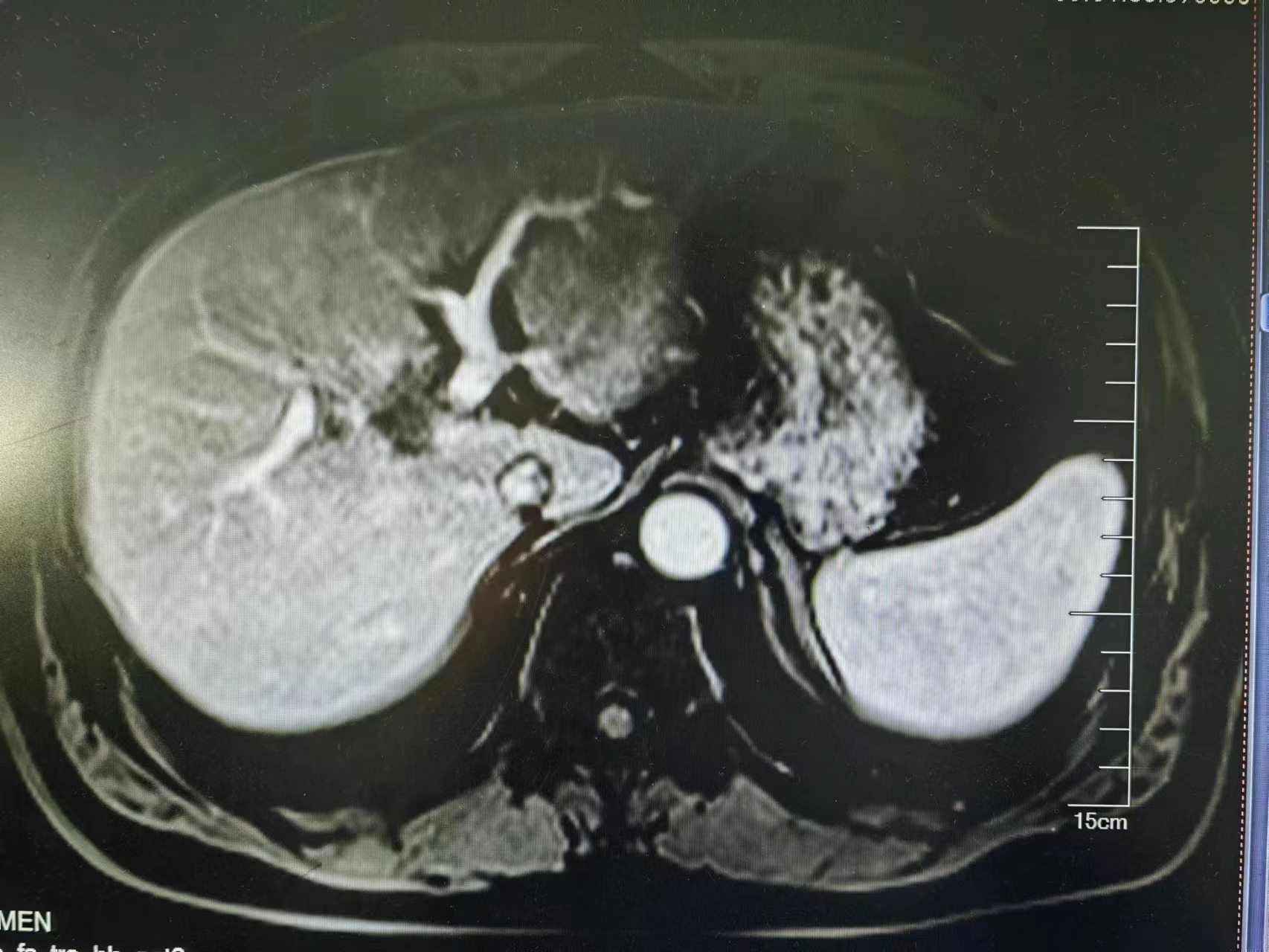
(The patient's follow-up imaging two months after surgery showed a very good recovery effect)
Professor Liang Qi stated that the surgery went smoothly and the immediate enhanced CT scan showed satisfactory ablation results. The domestically produced Nanoknife - the High Voltage Steep Pulse Minimally Invasive Therapeutic System - used in this surgery has high safety, stable energy field, and electrocardiogram synchronous monitoring function. The technology of domestic Nanoknife is already very mature and has been widely used in the treatment of complex liver malignant tumors, pancreatic cancer, and urological tumors. Currently, some head medical centers in China have gradually applied the pulse ablation technology to clinical practice. It is hoped that more and more doctors will pay attention to the application of Nanoknife in the field of malignant tumor treatment, and create new opportunities for cancer patients.

|
Liang Qi Xiangya Third Hospital of Central South University Associate Professor, Deputy Director of Radiology Department Doctor of Medicine, Master's Supervisor Visiting Scholar at the University of Sydney, Australia Main professional directions Interventional treatment of peripheral vascular diseases, minimally invasive treatment of tumors, and interventional treatment of critical illnesses. Association Part-time Job Member of the 16th Radiology Professional Committee Youth Group of the Chinese Medical Association Member of the 15th Radiology Intervention Professional Committee Youth Club of the Chinese Medical Association Executive member of the Chinese Medicine and Western Medicine Intervention Branch of the China Association of Traditional Chinese Medicine Information Deputy director of the Hunan Province Chinese Medicine and Western Medicine Intervention Medical Professional Committee Deputy leader of the Interventional Study Group of the Radiology Professional Committee of the Hunan Medical Association Member of the Interventional Medical Professional Committee of the Hunan Medical Association Member of the Quality Control Special Committee of the Interventional Medical Professional Committee of the Hunan Medical Association Member of the Liver Cancer Professional Committee of the Hunan Anti-Cancer Association Executive member of the Tumor Ablation Treatment Professional Committee of the Hunan Anti-Cancer Association Secretary of the Radiology Professional Committee of the Hunan Medical Association. |

|
Fu Dianxun Attending Physician/Medical Doctor Tianjin Medical University General Hospital Radiology Intervention Department Having been working in the Department of Medical Imaging at Tianjin Medical University General Hospital since 2008. In 2017, we were among the first in China to carry out malignant tumor nanoknife ablation therapy. Member of the Lung Cancer Minimally Invasive Comprehensive Treatment Branch of the Chinese Anti-Cancer Association's Minimally Invasive Treatment Professional Committee. Member of the Nanoknife Tumor Ablation Society of the Interventional Minimally Invasive Treatment Professional Committee of the China Medical Education Association. Standing Committee Member of the Primary Cardiovascular Disease Branch of the Chinese Society of Cardiothoracic and Vascular Anesthesia. Young Member of the Interventional Medicine Branch of the Tianjin Medical Association. |